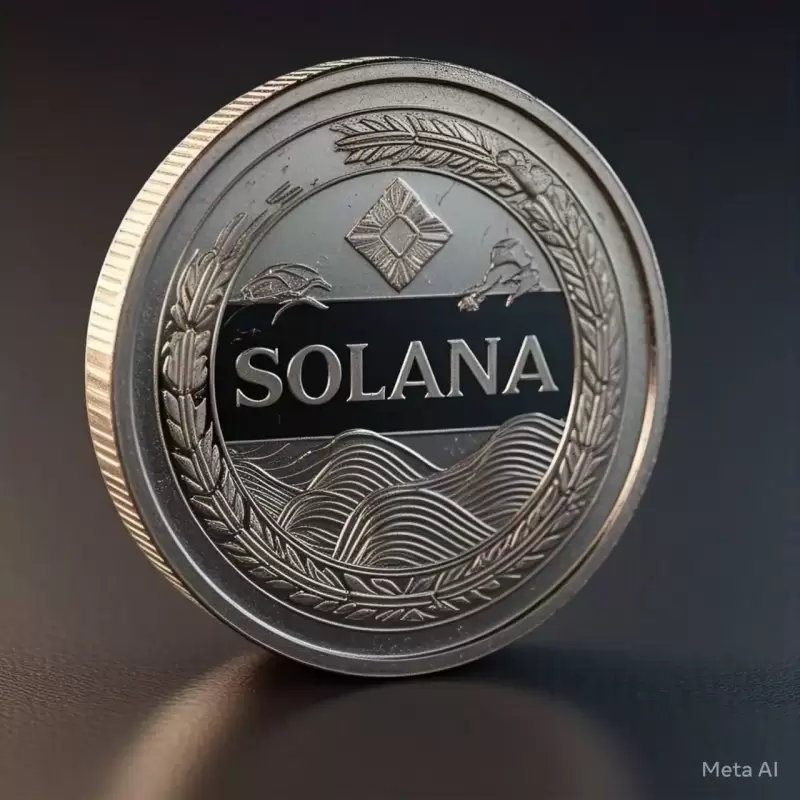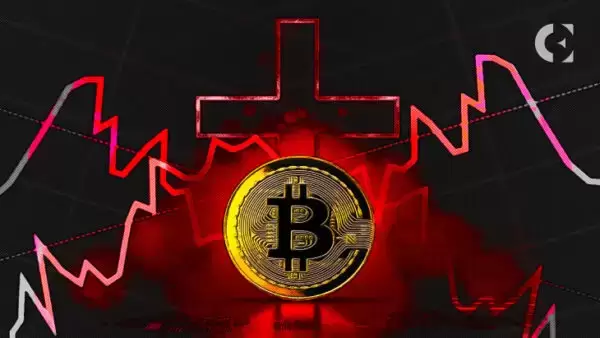 |
|
 |
|
 |
|
 |
|
 |
|
 |
|
 |
|
 |
|
 |
|
 |
|
 |
|
 |
|
 |
|
 |
|
 |
|
作为Solana的联合创始人Anatoly Yakovenko,加密货币的景观正在见证了一场重大的意识形态冲突,大胆地挑战了主要的行业叙事区块链规模。

An ideological clash is brewing in the heart of the cryptocurrency landscape, specifically regarding the best strategy for scaling blockchain technology. Anatoly Yakovenko, co-founder of Solana (SOL), is assertively challenging the industry narrative by stating that Layer-1 (L1) blockchains, like Solana, can achieve both speed and cost-efficiency without needing Layer-2 (L2) solutions.
意识形态冲突正在加密货币景观的核心酿造,特别是关于扩展区块链技术的最佳策略。 Solana(Sol)(SOL)的联合创始人Anatoly Yakovenko声称通过指出像Solana这样的第1层(L1)区块链可以达到速度和成本效率而无需第2层(L2)解决方案,对行业叙事质疑。
This assertion directly contradicts the widely accepted belief that L2s are crucial for enhancing blockchain scalability and performance, setting the stage for a heated debate on the optimal architecture for decentralized networks.
这种断言直接与公认的信念相矛盾,即L2对于增强区块链的可伸缩性和性能至关重要,为分散网络的最佳体系结构进行了激烈的辩论奠定了基础。
An L1-Centric Vision: Efficiency Without Layers
以L1为中心的视觉:无层的效率
以L1为中心的视觉:无层的效率
Yakovenko’s critique of L2 solutions stems from his belief that L1 blockchains, through their native design, can be sufficiently fast, cheap, and secure. He maintains that L2 solutions, despite aiming to augment performance, ultimately introduce new complexities and dependencies.
Yakovenko对L2解决方案的批评源于他相信L1区块链通过其本地设计可以足够快,便宜且安全。他坚持认为,尽管旨在提高性能,但L2解决方案最终引入了新的复杂性和依赖性。
“I don’t think we need anything other than the base layer to be fast enough, and we can make it fast enough,” Yakovenko asserts.
Yakovenko断言:“我认为除了基层以外,我们不需要任何其他东西,我们可以使它足够快。”
His skepticism extends to Ethereum’s (ETH) scaling model, which he views as pivoting too quickly to L2 solutions, to the detriment of the base layer.
他的怀疑态度扩展到以太坊的(ETH)缩放模型,他认为这过于迅速到L2解决方案,从而损害了基础层。
“It feels like we’re moving away from the base layer too quickly. We’re going to have a very slow base layer, and then we’re going to have a lot of L2s that are going to be dependent on it.”
“感觉就像我们要远离基层太快了。我们将拥有一个非常缓慢的基础层,然后我们将拥有很多L2S,这些L2将依赖于此。”
Yakovenko’s L1 advocacy is intrinsically linked to Solana’s ambition to challenge Ethereum’s dominance as the leading L1 network. Solana, known for its high throughput and low transaction fees, aims to provide a competitive ecosystem for developers and users.
Yakovenko的L1倡导与Solana的野心本质上联系在一起,挑战以太坊作为领先的L1网络的统治地位。 Solana以其高吞吐量和低交易费用而闻名,旨在为开发人员和用户提供竞争性生态系统。
“We can get to a place where the base chain is fast enough, and we don’t need anything else,” he adds, highlighting Solana’s potential to achieve optimal performance without resorting to L2 solutions.
他补充说:“我们可以到达基本链足够快的地方,而且我们不需要其他任何东西。”他强调了索拉纳在不采取L2解决方案的情况下实现最佳性能的潜力。
Yakovenko’s bold stance has sparked a lively debate within the cryptocurrency community, with varying perspectives on the future of blockchain scaling. Some agree with his vision of high-performance L1s, while others maintain that L2 solutions are necessary to handle the increasing demand for blockchain applications.
Yakovenko的大胆立场引发了加密货币社区中的一场激烈的辩论,对区块链规模的未来有不同的看法。有些人同意他对高性能L1的看法,而另一些人则认为L2解决方案对于处理对区块链应用的不断增长是必要的。
As the cryptocurrency industry continues to evolve, the discussion about the best scaling strategy will undoubtedly persist. Yakovenko’s vision of a future dominated by high-performance L1s challenges the prevailing consensus on blockchain architecture, setting the stage for an interesting chapter in the development of decentralized technology.
随着加密货币行业的不断发展,关于最佳扩展策略的讨论无疑将持续存在。 Yakovenko对由高性能L1S主导的未来的愿景挑战了在区块链体系结构上的普遍共识,这为分散技术开发的有趣章节奠定了基础。
Anatoly Yakovenko, the co-founder of Anatoly, has sparked a critical debate about the future of blockchain scaling, rolling up his sleeves to challenge the accepted narrative. In a recent interview, Yakovenko asserted that Layer-1 (L1) blockchains can achieve both speed and cost-efficiency without needing Layer-2 (L2) solutions.
Anatoly的联合创始人Anatoly Yakovenko引发了有关区块链规模的未来的批判性辩论,滚起了他的袖子,以挑战公认的叙述。在最近的一次采访中,Yakovenko断言,第1层(L1)区块链可以同时达到速度和成本效率,而无需第2层(L2)解决方案。
This assertion directly contradicts the widely accepted belief that L2s are crucial for enhancing blockchain scalability and performance, setting the stage for a heated discussion on the optimal architecture for decentralized networks.
这种断言直接与公认的信念相矛盾,即L2对于增强区块链的可伸缩性和性能至关重要,为分散网络的最佳架构进行了激烈的讨论奠定了基础。
An L1-Centric Vision: Efficiency Without Layers
以L1为中心的视觉:无层的效率
Yakovenko’s critique of L2 solutions stems from his belief that L1 blockchains, through their native design, can be sufficiently fast, cheap, and secure. He maintains that L2 solutions, despite aiming to augment performance, ultimately introduce new complexities and dependencies.
Yakovenko对L2解决方案的批评源于他相信L1区块链通过其本土设计可以足够快,便宜且安全。他坚持认为,尽管旨在提高性能,但L2解决方案最终引入了新的复杂性和依赖性。
“I don’t think we need anything other than the base layer to be fast enough, and we can make it fast enough,” Yakovenko asserts.
Yakovenko断言:“我认为除了基层以外,我们不需要任何其他东西,我们可以使它足够快。”
His skepticism extends to Ethereum’s scaling model, which he views as pivoting too quickly to L2 solutions, to the detriment of the base layer.
他的持怀疑态度扩展到以太坊的缩放模型,他认为这是对L2解决方案的旋转速度,从而损害了基础层。
“It feels like we’re moving away from the base layer too quickly. We’re going to have a very slow base layer, and then we’re going to have a lot of L2s that are going to be dependent on it.”
“感觉就像我们要远离基层太快了。我们将拥有一个非常缓慢的基础层,然后我们将拥有很多L2S,这些L2将依赖于此。”
Yakovenko’s L1 advocacy is intrinsically linked to Solana’s ambition to challenge Ethereum’s dominance as the leading L1 network. Solana, known for its high throughput and low transaction fees, aims to provide a competitive ecosystem for developers and users.
Yakovenko的L1倡导与Solana的野心本质上联系在一起,挑战以太坊作为领先的L1网络的统治地位。 Solana以其高吞吐量和低交易费用而闻名,旨在为开发人员和用户提供竞争性生态系统。
“We can get to a place where the base chain is fast enough, and we don’t need anything else,” he adds, highlighting Solana’s potential to achieve optimal performance without resorting to L2 solutions.
他补充说:“我们可以到达基本链足够快的地方,而且我们不需要其他任何东西。”他强调了索拉纳在不采取L2解决方案的情况下实现最佳性能的潜力。
Yakovenko’s bold stance has sparked a lively debate within the cryptocurrency community, with varying perspectives on the future of blockchain scaling. Some agree with his vision of high-performance L1s, while others maintain that L2 solutions are necessary to handle the increasing demand for blockchain applications.
Yakovenko的大胆立场引发了加密货币社区中的一场激烈的辩论,对区块链规模的未来有不同的看法。有些人同意他对高性能L1的看法,而另一些人则认为L2解决方案对于处理对区块链应用的不断增长是必要的。
As the cryptocurrency industry continues to evolve, the discussion about the best scaling strategy will undoubtedly persist. Yakovenko’s vision of a future dominated by high
随着加密货币行业的不断发展,关于最佳扩展策略的讨论无疑将持续存在。 Yakovenko关于以高中为主的未来的愿景
免责声明:info@kdj.com
所提供的信息并非交易建议。根据本文提供的信息进行的任何投资,kdj.com不承担任何责任。加密货币具有高波动性,强烈建议您深入研究后,谨慎投资!
如您认为本网站上使用的内容侵犯了您的版权,请立即联系我们(info@kdj.com),我们将及时删除。
-

-

-

- Dogecoin(Doge)以0.20美元的价格遇到重大市场抵抗力,停止了其最近的恢复势头
- 2025-03-29 21:35:12
- 由比特币领导的加密货币市场面临着衰退,影响了Dogecoin的价格轨迹。
-

- Nexaglobal推出了未来的世界代币(FWT),彻底改变了加密投资
- 2025-03-29 21:35:12
- 在当今快节奏的数字融资环境中,保持领先地位需要融合创新,战略愿景和尖端技术。
-

- 以太坊(ETH)市场跌至看跌情绪的涡流中
- 2025-03-29 21:30:12
- 当以太坊(ETH)陷入看跌式情绪时,加密货币市场正在见证令人恐惧的景象。
-

-

- 加密市场今天崩溃的真正原因:比特币与altcoin分析
- 2025-03-29 21:25:12
- 从市场面临急剧纠正的情况下,从一个有希望的一周开始,加密货币的一周迅速变成了失望。
-

- 比特币(BTC)死亡交叉模式可以标志着市场的底部
- 2025-03-29 21:25:12
- 这种模式通常被视为看跌信号。最重要的是,还有一个迫在眉睫的关税问题
-





























































